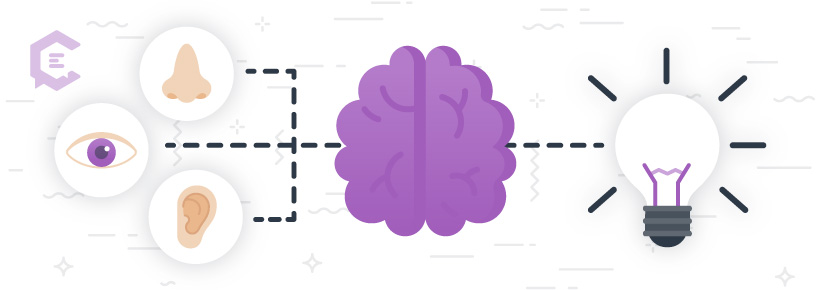There are a few things that separate us from our closest primate cousins, the bonobos and chimps. Even though bonobo brain circuitry has similar evolutionary structures as humans, according to neuroscientist Lisa Feldman Barrett, these apes cannot form “goal-based concepts.”
Nor can monkeys teach each other goal-based concepts the way humans can. Bonobos can’t then use these concepts to build trust, trade or build networks to communicate with each other across the globe.
As Barrett says:
“The human capacity for social reality appears unique in the animal kingdom. Only we can create and share purely mental concepts using words. Only we can use these concepts to more effectively regulate our own body budgets and each other’s, while we cooperate and compete with one another. Only we have concepts for mental states, such as emotion concepts, for predicting and making sense of sensations. Social reality is a human superpower.”
Lisa Feldman Barrett’s book ‘How Emotions Are Made‘ offers a compelling look at how the human brain simulates emotions and concepts in an interplay of mind, body and culture. Her findings help us explore the neuroscience behind emotions in ways that could help us communicate complexity better and understand our role in concept creation.
In this seven-part blog series, I take highlights from Barrett’s findings and explore the implications of these processes for writing. Let’s first take a step back to see how Barrett’s research informs us how concepts are made.

What is the concept cascade?
We live in a world full of sensory inputs that besiege our senses. I’m talking sources beyond our smartphones, TVs, and computer monitors. I mean all the sounds, smells, tastes, textures to touch and things to see in every atom of our environment. As infants, we learned within the first year to take all this enormous noise (data points) and make sense of it.
Barrett calls this process the “concept cascade.” Starting at the lower part of the brain, sensory inputs enter. The brain immediately finds the similar sounds or sights and the different ones and begins a process of categorization.
Through statistical learning, we sharpen these categories and mold them into concepts — from which the brain forms predictions. These predictions then activate our actions. If the predictions aren’t exactly right, prediction error occurs, and the brain attempts to course correct, issuing a new set of predictions and actions after resynthesizing new inputs. All this happens in a matter of milliseconds, faster than the blink of an eye.
Barrett claims that we don’t “store” any of these concepts in a part of the brain. We don’t catalog them and hide them in a “data bank” in the layers of our grey matter, but as we interact with the outside world and communicate with others, our brain filters up instances of concepts anew every time. With each interaction, a concept cascade is activated.
Let’s activate this concept cascade.
Take this list of items:
- Seashells
- Barley
- Cocoa beans
- Bolts of cloth
- Cigarettes
- Gold nuggets
- Silver coins
- Rupees
- Stocks
- Wire transfers
- Bitcoin
By the time you got halfway through the list, your brain had already started to try to categorize the items. When you got to golden nuggets, you were formulating predictions to label what concepts were at play.
Now ask yourself these questions:
- What is the concept behind the items in this list?
- Do any of these objects contain perceptual similarities? Do they look alike? Feel the same?
- Do the categories of objects share a goal, despite not sharing any perceptual features?
- If there are no shared perceptual features, but a shared category, can they be used to achieve different goals?
Since the invention of coinage some 2,500 years ago, we’ve trusted each other with a universal concept we call “money.” As author Yuval Noah Harari wrote in his book, ‘Sapiens: A Brief History of Humankind,’ once humans began to expand beyond their small communities and specialized their skills, bartering became too limiting.
Instead, humans developed money. He writes: “Money was created many times in many places. Its development required no technological breakthroughs — it was a purely mental revolution. It involved the creation of a new inter-subjective reality that exists solely in people’s shared imagination.”
If you take Barrett’s words, “social reality” comes close to Harari’s “inter-subjective reality.” Both suggest a reality built through shared goals so that members within a society can get along or get ahead. Harari’s “shared imagination,” like Barrett’s “goals-based concepts,” are the cornerstone to human cooperation in that we rely on concepts and words to achieve shared goals.

Why words matter in concept creation
As marketing and branding writers, your writing is meant to evoke emotions. For example, a product naming survey or concept test conducted with focus groups attempts to link an unknown product to popular concepts that include the following:
- Creative
- Trustworthy
- Durable
- Reliable
- Cutting-edge
- Playful
- Adventurous
A successful example of concept creation
One successful example that comes to mind is Swiffer! (The word gets me so excited, I had to put an exclamation point after it.) Interestingly, what comes to my mind when I say “Swiffer” is: “quick,” “swift,” “sweep.”
When juxtaposed with an old mop, I fear “sop,” and “slop,” and for many households, a Swiffer has come to replace a mop likely because of these same evoked feelings. I can even use the name as a verb: “I’m going to Swiffer that before it spreads.”
A less successful example of concept creation
A less successful example of a word helping to build a concept for me is “Bitcoin.” Concept-wise, as I understand it, Bitcoin is a digital currency used without the intervention of financial institutions such as banks. But the words “bit” and “coin” connote smallness, despite its promise of being the wave of the future, the newest “money.”
“Bit” might be linked to “byte” and “coin,” obviously of sovereigns of yesteryears. Though in our current day, coins have become passé. Maybe it’s an homage to the Conquistador Hernan Cortes, when he explained to Aztec natives perplexed by the Spaniard’s obsession with a yellow metal that could neither be eaten or used as a tool: “Because I and my companions suffer from a disease of the heart which can be cured only with gold.”
Coins, Harari writes, were used to verify values and were often stamped with a guarantee, “In God We Trust” amid the face of an authority figure, such as a king or a president. Bitcoin turns that stamp of authority on its head, as verification comes from a “democratic” process of mining coins with enormous digital farms. It claims to be a money verified not by institutions, but public ledger. See, lots of complex concepts, for which the word “bitcoin” seems inadequate.
As writers, we are tasked with the tall order of getting people with very different perspectives, brain wiring, and cultural influences, to come to some synchronized moments of shared understanding.
Barrett’s work emphasizes how humans as a species have used concepts, goals and words to create a social reality. That social reality is built with a lens of culture, to create a “collective intentionality.” To communicate “trust,” which is a purely mental concept, and an emotional concept, there needs to be a shared understanding of what trust is.
“Trust” might not be the exact same thing for any two people, but language — the words we create, arrange and use to communicate — allow us to influence large groups of people to cooperate.



